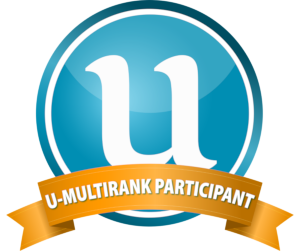Human Anatomy including Dissection Course (MK_063)
About Study Course
Learning outcomes
1.As a result of completing the study course, students will be able to: 1) formulate the human place in the system of classification of organisms, outline the basic principles of the structure of the organism; 2) describe the structure of organ systems of the human body, the position of organs, functions, regularities, blood supply and innervation; 3) define the basic concepts and terminology of anatomy in Latvian and Latin; 4) demonstrate an understanding of key concepts and regularities; 5) gain a basic understanding of 3D modelling, printing and related technologies.
1.As a result of completing the study course, students will be able to: 1) explain and point to skeletal bones and their formations, joints, muscles, major blood vessels and nerves, internal organs, their parts and sensory organs on the study aids used in practical anatomy classes, using appropriate basic anatomy concepts and terms in Latvian and Latin; 2) obtain, evaluate, summarize and compare information from various literature sources and specific sources of information; 3) develop the ability to ask specific questions or find answers about the structure of the human body, developing the ability to express one’s opinion, to argue and supplement it; 4) work individually or in teams; 5) engage in a dialogue and debate; 6) use the dissection equipment; 7) prepare the material properly; 8) recognize the dissected anatomical structures; 9) distinguish the position of classical structures from variants of the norm; 10) interpret and explain the obtained results, formulate conclusions and introduce the obtained results (in writing, orally); 11) prepare a 3D model for printing and print it.
1.Students will know, identify and describe various anatomical structures of the human body in relation to systems, location and planes; demonstrate an understanding of the anatomical terminology and primary functions of the major systems of the human body; will improve their competitiveness in the 3D-related labour market.
Study course planning
| Study programme | Study semester | Program level | Study course category | Lecturers | Schedule |
|---|---|---|---|---|---|
| Medicine | 3 | Master's | Required | Jeļena Kucina, Marija Podļesnaja, Ričards Gurins, Santa Kursīte, Daniils Trošins, Līga Lielmane, Liāna Pļaviņa, Līva Kuzmane, Normunds Bauers, Arta Grabčika, Ruta Renāte Kažmere, Elīna Sīmane, Anna Regīna Knoka |
| Study programme | Study semester | Program level | Study course category | Lecturers | Schedule |
|---|---|---|---|---|---|
| Medicine | 3 | Master's | Required | Jeļena Kucina, Marija Podļesnaja, Ričards Gurins, Santa Kursīte, Daniils Trošins, Līga Lielmane, Liāna Pļaviņa, Līva Kuzmane, Normunds Bauers, Arta Grabčika, Ruta Renāte Kažmere, Elīna Sīmane, Anna Regīna Knoka |



